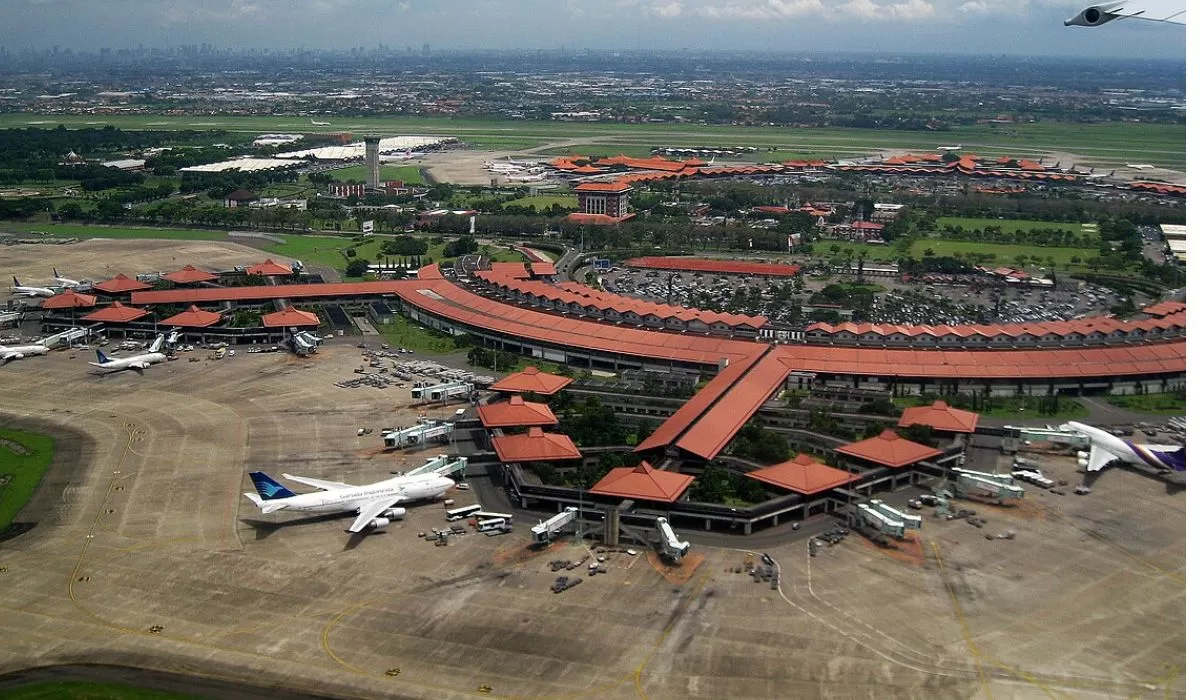Airports are more than just transit points for planes—they are essential gateways that connect people, goods, and ideas. As vital infrastructure in modern transportation, airports play a key role in driving economic growth, enhancing mobility, and strengthening both domestic and international connectivity.
For an archipelagic country like Indonesia, with around 17,000 islands, airports are indispensable. They ensure efficient inter-island travel and contribute significantly to balanced national development.
According to CIA data (2025) published by GoodStats.id, Indonesia ranks first in Southeast Asia for having the largest number of airports.
Here are the top 11 Southeast Asian Countries by Number of Airports
1. Indonesia – 556 Airports
Indonesia tops the list with 556 airports spread across the archipelago—from Sabang in the west to Merauke in the east. The large number reflects the country’s geographical challenges and its commitment to improving air connectivity for both domestic and international routes.
2. Philippines – 256 Airports
Coming in second, the Philippines, which also consists of over 7,000 islands, has 256 airports. Like Indonesia, its extensive network supports inter-island mobility and tourism, two pillars of its growing economy.
3. Thailand – 105 Airports
Thailand ranks third with 105 airports, serving as regional hubs for tourism and logistics. Bangkok’s Suvarnabhumi and Don Mueang airports are among Southeast Asia’s busiest.
4. Malaysia – 100 Airports
In fourth place, Malaysia has 100 airports, supporting both its industrial regions and tourism-heavy destinations like Penang, Langkawi, and Sabah.
5. Myanmar – 74 Airports
Myanmar maintains 74 airports, a crucial component for domestic connectivity across its vast and often mountainous terrain.
6. Vietnam – 36 Airports
Vietnam’s 36 airports handle its growing tourism and export industries, connecting key economic hubs like Hanoi, Da Nang, and Ho Chi Minh City.
7. Laos – 20 Airports
Laos operates 20 airports, many serving remote provinces, emphasizing accessibility for its landlocked regions.
8. Cambodia – 12 Airports
Cambodia’s 12 airports include Phnom Penh International Airport and Siem Reap, gateways to the world-famous Angkor Wat.
9. Timor-Leste – 11 Airports
Timor-Leste, one of the smallest nations in the region, has 11 airports, underscoring its efforts to boost mobility and economic independence.
10. Singapore – 9 Airports
Despite its small size, Singapore operates 9 airports, including Changi Airport—one of the world’s top-rated international aviation hubs.
11. Brunei Darussalam – 2 Airports
Brunei ranks last with just two airports, though in practice, only Brunei International Airport is actively used, serving both Brunei and Muara districts.
Beyond the Numbers: Maintaining and Modernizing Airports
CIA data includes all airports with identifiable runways—paved or unpaved—and may even count closed or inactive ones. Some airports are decommissioned due to economic constraints or policy changes, which can lead to land waste and reduced accessibility.
As the country with the most airports in Southeast Asia, Indonesia faces the challenge of not only maintaining these facilities but also modernizing them to meet global standards. Continuous investment in infrastructure and management will ensure that Indonesia’s air network remains a strong foundation for national growth.
Source: GoodStats, RRI
Photo Credit: wikipedia


